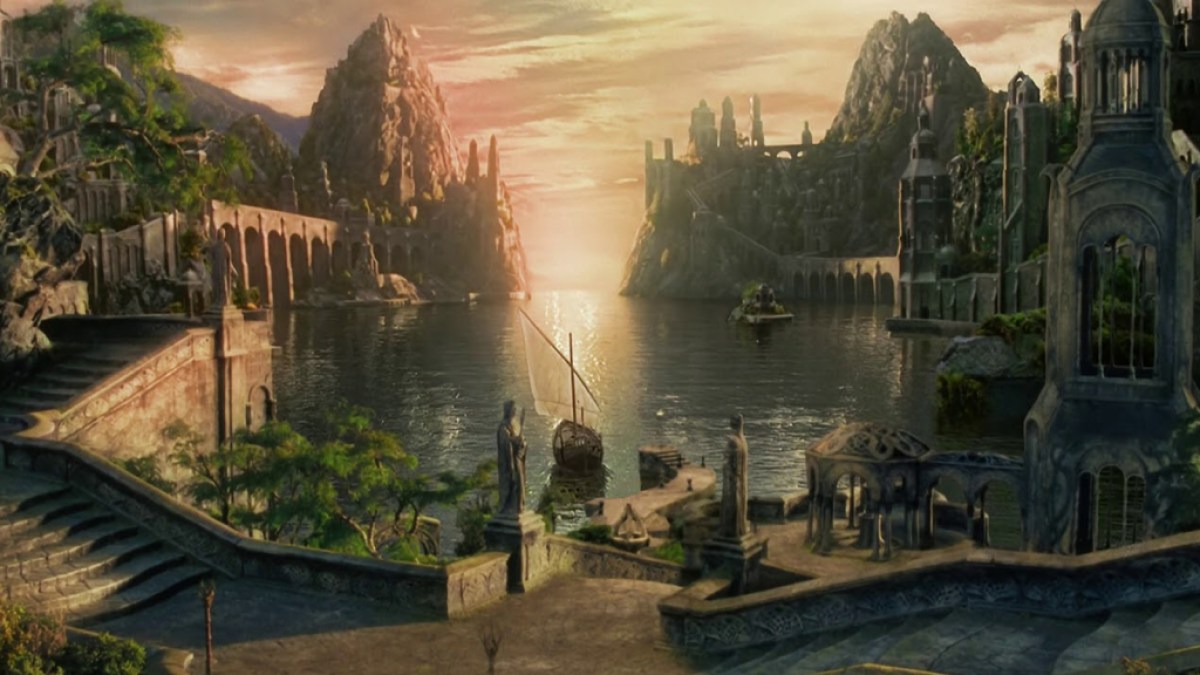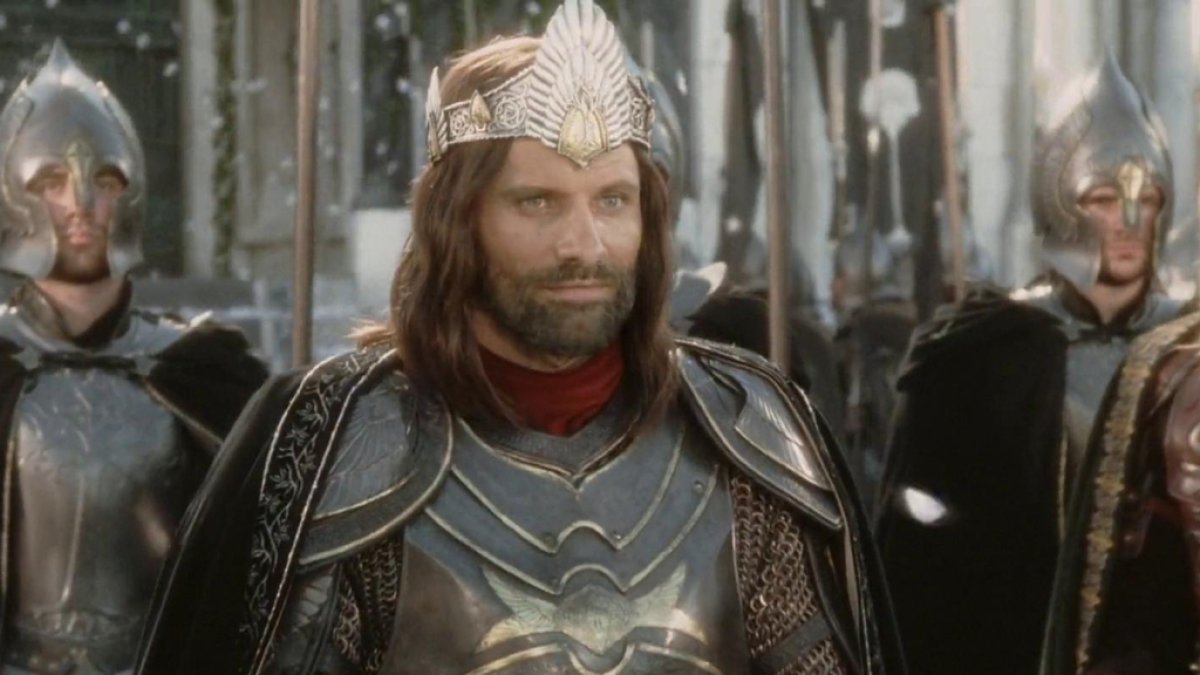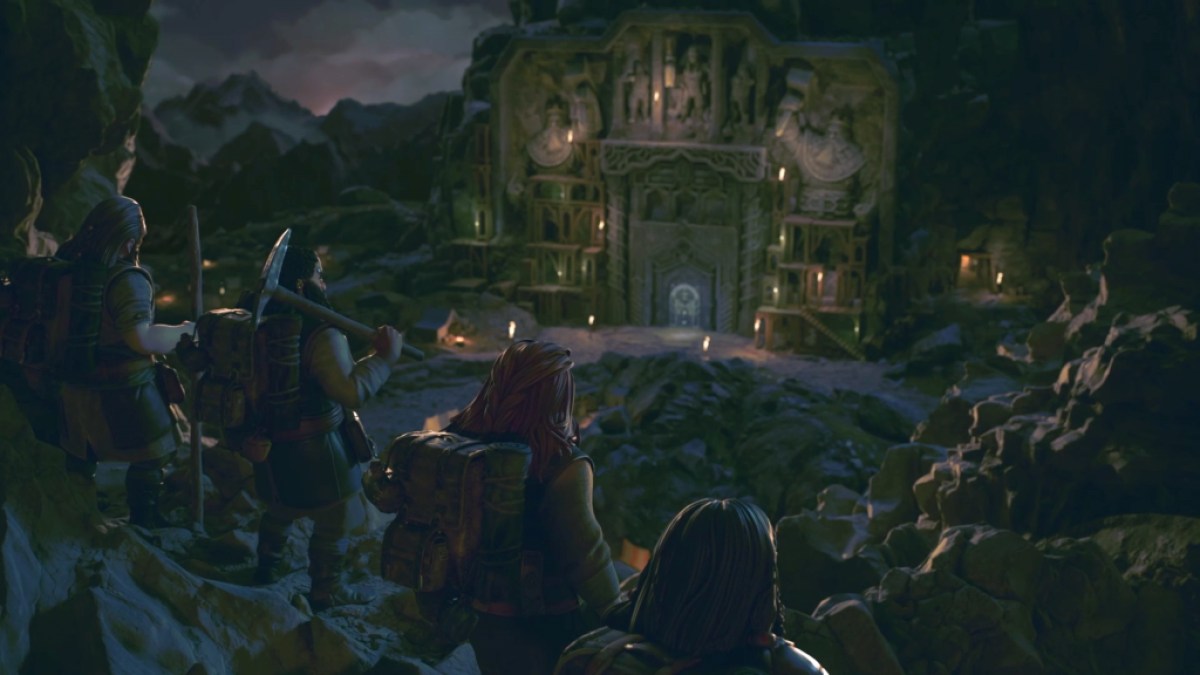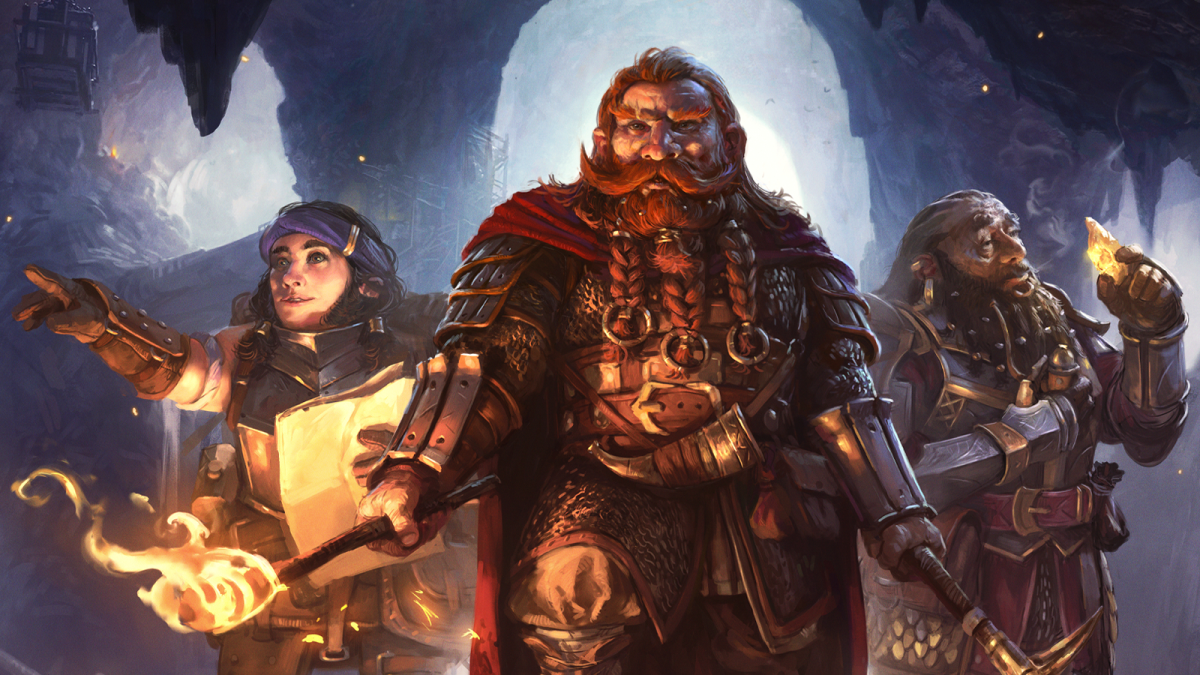With Lord of the Rings: Return to Moria on the horizon, you may be wondering what there is to know about the game’s Fourth Age setting. You’re not alone, either. When developer Free Range Games and publisher North Beach Games first unveiled Return to Moria, this seemingly minor detail caught many Middle-earth fans’ attention. Rather than focusing on Return to Moria‘s survival crafting gameplay, procedurally-generated environments or custom character creator, these folks zeroed in on how the game fits within the Lord of the Rings timeline.
Why all the interest in this seemingly trivial aspect of what is, on the face of it, just another Lord of the Rings licensed title? Because The Lord of the Rings itself takes place during Middle-earth’s Third Age, which means Return to Moria is set in a time period that not even original author J.R.R. Tolkien covered in much detail. In short: Return to Moria potentially represents uncharted territory for the franchise.
Well, kind of. Tolkien did outline the broad strokes of what happens once The Lord of the Rings wraps up, and at least some of this material will likely crop up in Return to Moria. So, with that in mind, we’ve pulled together this handy round-up of everything you need to know about Return to Moria‘s Fourth Age setting to ensure you’re fully up to speed when the game hits shelves on Oct. 24!
Related: Is Lord of the Rings: Gollum Canon?
When Is the Fourth Age?

According to Tolkien’s official Middle-earth timeline, the Fourth Age kicks off after the One Ring’s destruction and Sauron’s defeat in the third Lord of the Rings volume The Return of the King. While both the book and its 2003 big screen adaptation go on to depict several events beyond this point – such as Aragorn’s coronation and the Hobbits’ return to the Shire – this all still happens during the Third Age. It’s not until Frodo departs Middle-earth with Gandalf, Galadriel, Elrond, and Bilbo a year later that the Fourth Age finally arrives.
Interestingly, while Tolkien was pretty prescriptive about when the Fourth Age started, he couldn’t quite make up his mind about exactly how long the Fourth Age lasted. In his various notes and correspondences, the scribe initially suggested the Fourth Age ran for around 3,000 years (roughly in line with the respective lengths of the Second and Third Ages), before theorizing that Middle-earth’s later eras became much shorter as time went on.
Either way, the key thing to understand about the Fourth Age is that it’s the furtherest documented point in Middle-earth’s chronology. After that, you arrive in current times (The Lord of the Rings and its prequels serve as a fictional pre-history to our own world), although Tolkien did toy with idea of introducing a final, Ragnarok-type cataclysm, Dagor Dagorath, in the distant future that would’ve capped things off for good.
Related: Lord of the Rings: Return to Moria Gets First Look at Co-op Survival Gameplay
What the Lord of the Rings Books Tell Us About the Fourth Age

Unsurprisingly, most of what know about the Fourth Age comes from Return of the King (specifically, its appendices). Here, Tolkien reveals that Aragorn reunifies Middle-earth’s two great kingdoms of Men – Arnor in the north and Gondor in the South – ushering in that race’s dominance during the era. The newly-crowned monarch also teams up with fellow rookie ruler King Éomer to wipe out what remains of Sauron’s Orc hordes, and forge treaties (or otherwise pacify) the Haradrim and Easterling Men who fought for the Shadow during the War of the Ring.
Meanwhile, Middle-earth’s remaining Elves set sail for the Undying Lands, or stick around long enough to effectively fade out of existence. The Dwarves also start disappearing the longer the Fourth Age rolls along, but not before Gimli founds a new Dwarf colony, Aglarond. Under Gimli’s stewardship, Aglarond plays a major role in rebuilding Middle-earth post-War of the Ring, making repairs and improvements to the likes of Gondor’s capital city, Minas Tirith.
So, basically, the Fourth Age is a time of peace – unless you count Tolkien’s incomplete, unpublished Lord of the Rings sequel. Titled “The New Shadow,” this follow-up tale would have unfolded over 200 years into the Fourth Age, during the reign of Aragorn’s son, Eldarion. Tolkien only penned about 13 pages of The New Shadow before writing it off as too much of a downer, however, he later supplied a outline of the sequel’s story and themes.
The general gist is that centuries of peace has the world of Men feeling a bit bored, which naturally gives rise to a quasi-Satanic cult, the Dark Tree, that worships Sauron and his former boss, Morgoth. These cultists (along with gangs of teenage Orc cosplayers) gradually become more and more of a threat to Middle-earth’s security, leading Eldarion and those still loyal to him to square off against them in a climactic confrontation. It all sounds very thrilling, however, we need to once again stress that The New Shadow was never finished, much less published, so it’s canonical status is dubious at best.
How Return to Moria Fits Into the Lord of the Rings Timeline & Canon

Okay, so where does The Lord of the Rings: Return to Moria fit within all of this? It’s actually pretty easy to figure out. Based on an interview with Return to Moria‘s director, Jon-Paul Dumont, the game is essentially an adaptation of a canonical event: Durin the Last’s quest to reclaim Moria. Tolkien doesn’t put a specific date on this event, however, various sources indicate it occurs after the Fourth Age’s first century.
If we then cross-reference this timeframe with Gimli’s confirmed inclusion in Return to Moria, it becomes even easier to narrow down where it sits on the Lord of the Rings timeline. Tolkien’s lore confirms that Gimli exits Middle-earth forever in the 120th year of the Fourth Age, so Return to Moria can’t take place any later this (potential deviations from canon notwithstanding). Combined with what we already know about the timeline, it’s therefore safe to assume that Return to Moria is set 100-120 years into the Fourth Age.
It’s not possible to get any more precise than this without further information – so here’s hoping The Lord of the Rings: Return to Moria supplies more chronological clues when it arrives on PS5 and PC on Oct. 24!






Published: Oct 18, 2023 02:30 pm